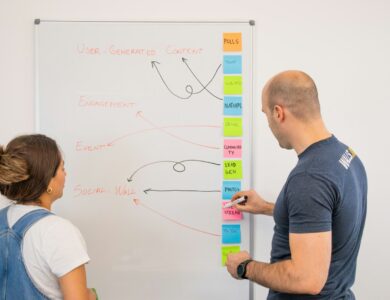
Introduction:
Every group has energy—and it fluctuates. Some sessions start with excitement and fade to fatigue. Others build slowly and peak late. The ability to manage group energy is a subtle but essential facilitation skill. It influences focus, morale, and productivity. By recognizing energy dynamics and adjusting accordingly, educators keep learners engaged, balanced, and performing at their best.
Why Group Energy Matters:
- High energy supports creativity and momentum.
- Low energy can enable deep focus—but too much leads to disengagement.
- Unregulated energy results in distraction or burnout.
Diagnosing Group Energy:
Observe:
- Body language (slouching, fidgeting).
- Participation levels.
- Tone of voice.
- Quality of output.
Ask:
- “How’s everyone feeling right now?”
- “Do we need a stretch, or are we in a good flow?”
Techniques to Boost Low Energy:
- Energizers: Quick games, physical movement, or humor.
- Movement Breaks: Stretch, shake-out, or a short walk.
- Change Formats: Switch from lecture to small group work or visual activity.
- Use Music or Visuals: Set a tone shift with upbeat music or colorful prompts.
Techniques to Calm Over-Energy:
- Breathing Exercises: Slow down with guided breathwork or grounding.
- Silent Reflection: Journal or meditate for 3–5 minutes.
- Solo Tasks: Give individuals time to work quietly before regrouping.
Designing Sessions with Energy Flow:
Plan your agenda like a wave:
- Begin with connection (check-in, light activity).
- Move into focused work.
- Insert breaks and transitions.
- End with reflection or celebration.
Sustain Energy Long-Term:
- Vary stimuli across sessions.
- Acknowledge emotions and fatigue.
- Celebrate progress visibly and often.
- Involve learners in pacing and planning.
Conclusion:
Energy is invisible, but its impact is tangible. Managing it with intention creates learning environments that are alive, adaptable, and human. Educators who master this art ensure not only productivity—but joy in the process.




